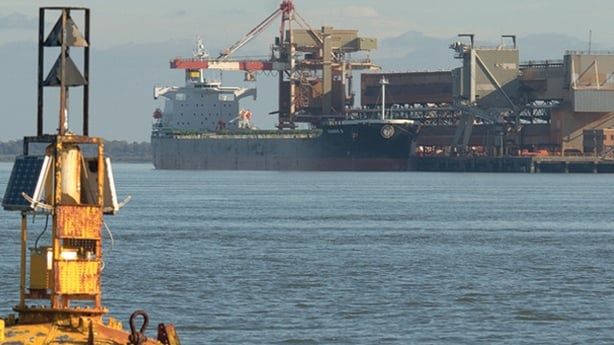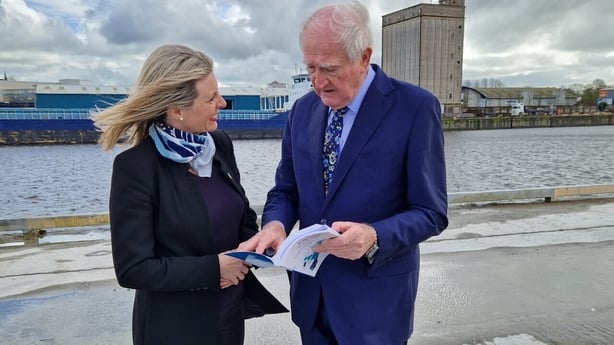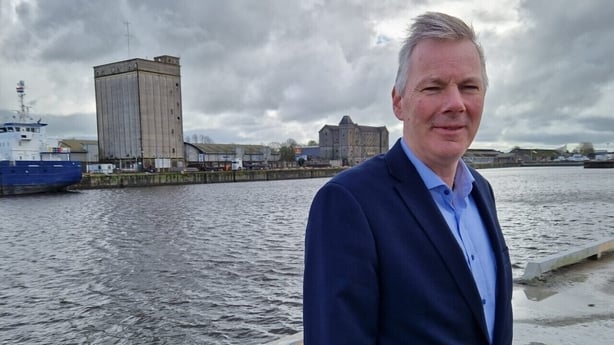Ireland's wind energy potential off the west coast could supply up to 10% of Europe's electricity power by 2050 by means of a proposed Supergrid connecting Ireland with the rest of the continent.
This could play a huge part in making Ireland an energy exporter, as well as tackling the climate crisis, and reducing our dependence on Russian energy sources.
However in order to harvest this vast potential of wind energy along our south and west Atlantic coast, wind energy companies who are already invested in projects over 30 kilometres off the west Clare coast have warned that the regulatory environment surrounding ocean based power needs to be speeded up, or we run the risk that investment which could change our energy economy will move elsewhere.
Research has shown that Ireland has one of the richest sources of potential wind power off our Atlantic coast which could produce up to 70 gigawatts of power a year - ten times more than we need.
The Shannon Foynes Port Company has already outlined a masterplan for harvesting that energy by means of the development of a wind energy hub at Foynes Island where the giant ocean based turbines could be built and transported to sea.

Val Cummins is director of Simply Blue group, a global ocean energy company headquartered in Cork, but involved in the development of floating wind energy projects all around the world.
She says one of the 'jewels' in their crown is the Western Star floating off shore wind farm 35 kilometres off Loop head in Co Clare, which has an ambition to deliver 1.3 gigawatts of wind energy, which could power up to one million homes.
But the slow pace of regulation here in offshore wind potential is causing concern to companies like hers.
"Floating off shore wind is different to fixed wind energy infrastructure because it can be deployed in deeper waters through a system of moorings and anchors.
"And we are really excited about the west coast project and the prospects it has for transforming Irelands energy economy."
Ms Cummins says they are hoping to be in a position to deliver that project as part of the Government's phase 2 offshore wind targets which envisages delivering five gigawatts of offshore wind by 2030.
"But unfortunately, that has now been put back as floating offshore wind is now part of a Phase three tranche of development by Government. We were poised to deliver by 2030, but given the regulatory landscape, it now looks like it will not come on stream until the early 2030's.

"The risk with the regulatory process being slow is that this investment moves elsewhere so we are very anxious to have the opportunity to unlock this potential given the investment and technology that is there and ready."
She says the marine planning system has seen much progress in the last couple of years but "we are in a climate crisis, and therefore there is a lot at stake here".
"The big ask is we need to be developing the south and west coast for offshore ocean based wind farms in tandem with developing the east coast with its fixed based wind turbines.
"We need to be moving now in order to realise the benefits that will come in eight to ten years time," she says.
Harvesting that surplus wind is one thing, delivering it to those European countries where it is in demand, particularly in Germany and the Netherlands, is also another issue and this is where Ireland could play a major role in contributing to a proposed European Supergrid which could deliver energy across a loop of grid structures stretching across Northern Europe, down to Greece and across the Mediterranean.
Dr Eddie O’ Connor, founder of Airtricity, and now Chairman of the SuperNode Ltd renewable energy company says Irelands offshore wind resources have the potential to deliver up to 10% of Europe’s power by 2050.
This would provide a solution to climate change, one of the greatest challenges of our time, and energy security arising from Russia’s invasion of Ukraine.
We need your consent to load this rte-player contentWe use rte-player to manage extra content that can set cookies on your device and collect data about your activity. Please review their details and accept them to load the content.Manage Preferences
"There are many counties in Europe without sufficient renewable resources to decarbonise their economies.
"There is currently no way of getting wind and solar renewably generated electricity from remote areas at the edge of the continent to those countries which want to do it but do not have the means to do so from their own resources.
"You cannot decarbonise Europe without the Supergrid in my view," he says.
The Shannon Foynes Port company CEO Pat Keating says their masterplan outlines a strategy for port infrastructure to build the turbines needed for offshore wind production, and transport them out to sea and the deep water of Foynes Port is ideally suited for this work.

"The supergrid project is a fantastic piece of technology. We have a huge resource out there off the Shannon estuary and the Supergrid is looking like it would be one of those routes to market, which is vitally important to harness that wind energy resource we have off the west coast," he says.







